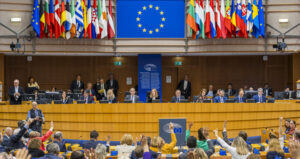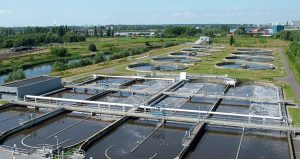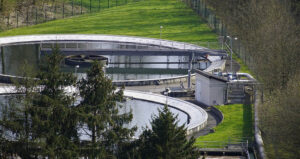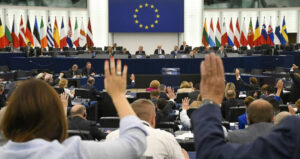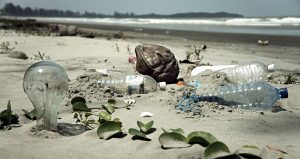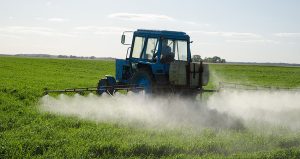EEA identifies seven key pressures on Europe’s waters
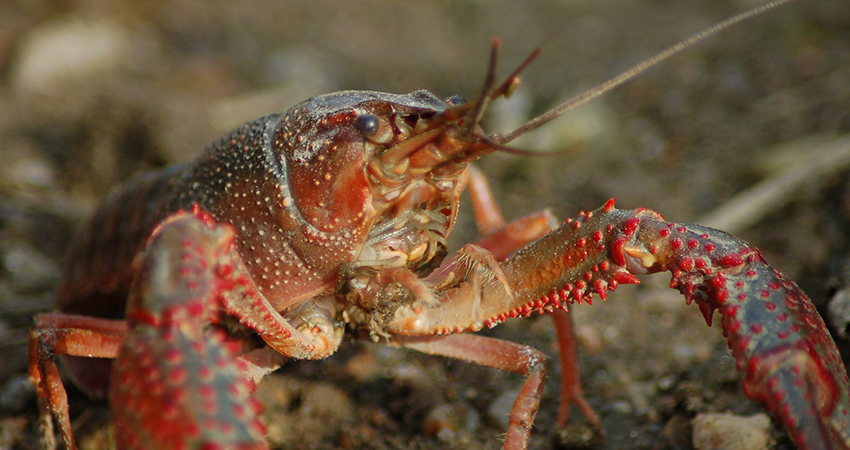
- 26 September 2021
-
 Esther Rasenberg
Esther Rasenberg
Share article:
Agricultural pollution, insufficiently treated waste water, artificial barriers, navigation, water abstraction, aquaculture and invasive alien species are causing pressure on Europe’s waters. In a new report of the European Environment Agency (EEA) the biggest water challenges are charted. The report published Thursday the 23rd of September is meant to help prioritising the main water issues that should be tackled with measures.
The EEA report ‘Drivers of and pressures arising from selected key water management challenges — A European overview’ also shows that a broad range of measures are already available to improve the state of Europe’s water bodies. ‘Water retention measures, nature-based solutions and land use change measures offer multiple benefits.’ In order to comply to the Water Framework Directive in the upcoming third River Basin Management Plans (RBMPs) efforts and resources have to be addressed to the most challenging issues.
Implementing existing legislation
‘Overall, better and more coherent implementation of the existing legislation — including the Urban Waste Water Treatment Directive, the Floods Directive, and the Water Framework Directive — would reduce key pressures on water. Moreover, all water-using sectors, such as agriculture, energy, mining, aquaculture and navigation, should adopt management practices that can keep water ecosystems healthy and resilient’, the EEA report states. These include farming programmes that reduce the use of pesticides, hydropower that ensures passage for fish, stringent fuel standards for navigation and preservation of river banks.
Untreated wastewater
Currently, key problems include pollution from urban and industrial waste water, diffuse pollution from agriculture, and pollution from mining and dwellings that are not connected to a sewage system. Overall, 22 % of Europe’s surface water bodies and 28 % of the groundwater supply are significantly affected by diffuse pollution from agriculture, both by nutrients and pesticides. Deposition of air pollutants, particularly mercury, leads to the poor chemical status of Europe’s water bodies.
Artificial waters
According to the report about 34 % of surface water bodies are significantly affected by structural changes, linked to, for example, stabilising the river channel, water storage, hydropower, flood protection or irrigation. Structural changes affect river course and flow, which can have a major impact on the river and floodplain biodiversity. Many of the structures are different types of barriers, but for about 40 % of affected water bodies the purpose of the barriers is unclear, the EEA report notes.
Invasive species
Lesser but still important pressures include aquaculture and invasive alien species. Some invasive aquatic invertebrates have had major effects on ecosystems, like the red swamp crayfish. The zebra mussel (Dreissena polymorpha) form dense encrustations, which cause serious damage to infrastructure, clogging up the water intake of industrial and drinking water plants. The killer shrimp (Dicerogammarus villosus) can feed on a variety of freshwater invertebrates, including other native shrimp species, fish eggs and young fish, and it can significantly alter ecosystems.
Navigation
To maintain navigable water levels in artificial canals that connect different river systems, water is often moved between rivers, not only altering hydrology but also spreading invasive alien species. Furthermore, shipping is an important dispersal vector for invasive species between river systems, either by transport on the vessels or by release of bilge water.
Water scarcity
Water scarcity and drought events are an increasing problem in many areas of Europe, both permanently and seasonally, the report warns. About 6 % of Europe’s surface water bodies and 17 % of the groundwater area are significantly affected by water abstraction, mainly linked to agriculture, public water supply and industry.
Improvement of Europe’s waters
Between 2010 and 2015 the improvement of the European waters came to a standstill. According to the EEA-report the main improvement during in these years was that fewer water bodies with unknown status increased. The analysis of the second RBMPs shows that there has been progress in the status of single quality elements and single pollutants. Due to the ‘one out all out’ principle partial progress is not reflected in the overall results.

